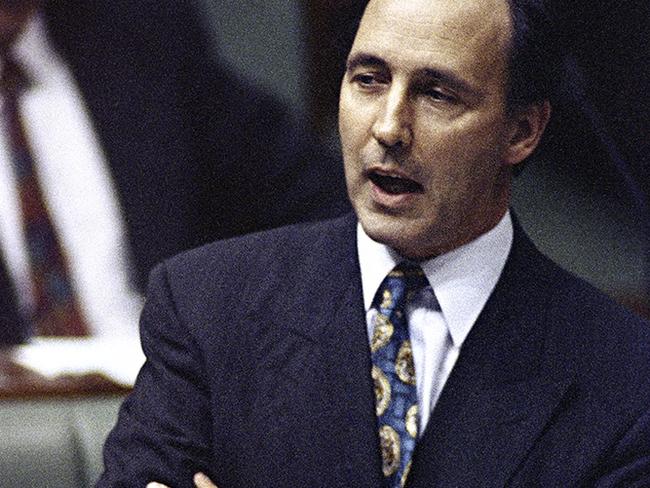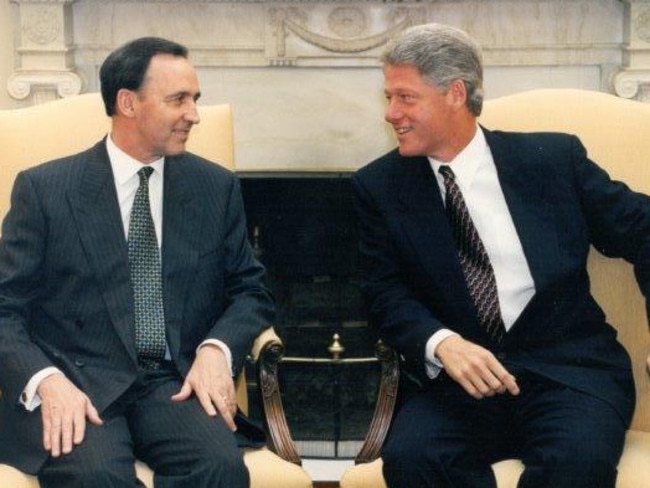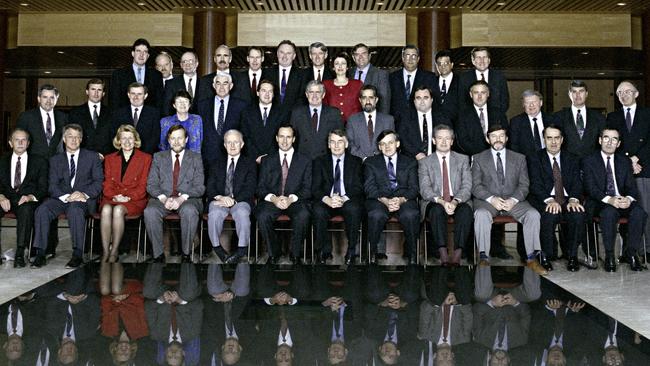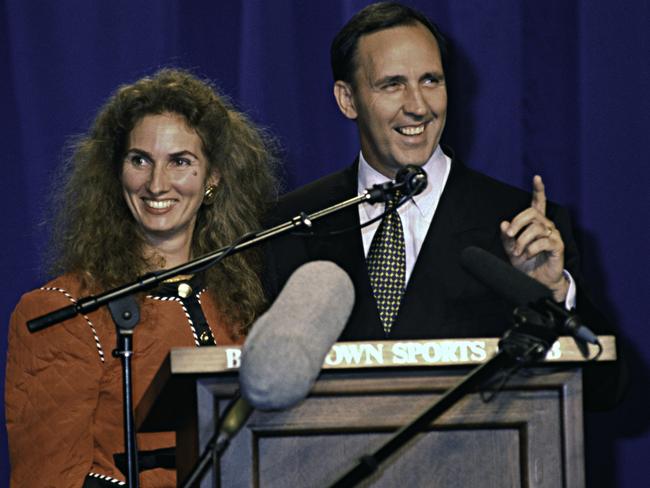Keating’s worst fear revealed — sinking back into recession
PAUL Keating’s ‘recession we had to have’ provided a menacing motive to dig Australia out of deficit, Cabinet papers have revealed.
National
Don't miss out on the headlines from National. Followed categories will be added to My News.
THE early days of Paul Keating’s administration were all about the recession — and how to keep Australia from sinking back into the depths of economic gloom.
Cabinet documents for the period from January 1992 to December 1993 reveal the panic that gripped decision makers in the wake of the former Treasurer’s “recession we had to have”.
With unemployment soaring to almost a million and the budget deficit building, almost everything was on the table as Ministers sought to deliver on the Prime Minister’s One Nation strategy.
In promising to restore jobs and prosperity over four years, One Nation argued for the kind of stimulus the government had resisted as recession bit harder through 1991.

There was “no economic reason” to hold 70 per cent of the Commonwealth Bank for example, when a sale of up to 20 per cent of shares could yield about $1 billion.
Qantas was also ripe for sale, Cabinet decided, despite there being few interested buyers.
In the end, a trade sale and public float reaped more than $2 billion with the Qantas Sale Act ensuring the Flying Kangaroo would remain in Australian hands.
Other proposals considered were a third public mobile telecommunications licence, remodelling Australia Post on retail and self-service lines, rationalising land use restrictions in national parks and nature reserves, and easing foreign investment guidelines.
Paul Keating’s own support for the sale of the Royal Australian Mint failed to win Cabinet’s backing but the sale of Defence housing to raise $300 million was given the green light.
The Defence Department argued strongly against the proposal, warning defence personnel would have to be moved from existing homes to meet the target of about 2100 sales in three years.
“The ability to achieve the overall sales target is severely questioned, given the current economic climate,” said the Defence submission.

Ministers were tasked with finding employment-generating projects in their portfolios with “zero net outlay”.
Finance Minister Ralph Willis lamented the difficulty of the job at hand.
“The task of vetting new policy and savings to achieve a result that is consistent with One Nation commitments is indeed most formidable,” said Mr Willis in his Cabinet submission.
As the race for revenue intensified, so did the demand for expenditure on everything from asylum seeker assistance to more university places.
Higher Education Minister Peter Baldwin sought 4500 more uni places and more HECS-free scholarships to address sliding numbers of tertiary entrants.
He warned the transfer rate from school to higher education had slipped from 43 per cent in 1991 to 36 per cent in 1992 — the lowest level since 1979.
The government was also under pressure to honour the recommendations of the Royal Commission into Aboriginal Deaths in Custody — which required $540 million of funding.
Less than a third ($150 million) was provided after Treasury questioned whether any direct link could be made between deaths in custody and areas of disadvantage.
Cabinet historian, Professor Nicholas Brown said complicating the budgetary issues was a “Prime Minister who wanted to make a move on big symbolic issues”.
To that end, a Republic Advisory Committee was established — chaired by Malcolm Turnbull; an adviser on the status of women was appointed, changes were made to the Citizenship Act’s oath of allegiance, racial vilification became a criminal offence and the Defence Force was made to scrap its ban on homosexual servicemen and women.

How the Qantas Sale Act transpired
Qantas might still be in government hands had Paul Keating’s Cabinet listened to Treasury officials.
Cabinet documents from 1992 reveal it was federal bean counters who were most opposed to the Qantas sale because of the lack of analysis regarding the benefit to consumers and the national economy.
The Qantas Sale Act 1992 cleared the way for the Flying Kangaroo to pay $400 million for Australian Airlines (formerly TAA) and re-enter the domestic market.
The legislation also marked the start of the carrier’s privatisation and imposed a 49 per cent cap on foreign ownership to ensure Qantas remained in Australian hands.
A Cabinet meeting to discuss the matter on June 1, 1992, revealed the main concern was how to milk as much money as possible from the deal.
Consideration was even given to a “reverse acquisition” of Qantas by Australian Airlines followed by a 100 per cent sale of AA.
After extensive debate about the various sale options, it was agreed the $400 million merger and subsequent 49 per cent trade sale would deliver the greatest budget benefit.
Only Treasury voiced concerns the process had “not adequately covered the economic and potential national benefits” that motivated the Government’s decision to sell the Flying Kangaroo.
“The benefits to consumers, and the economy more broadly, should be the overriding consideration of the Government, not the bottom line revenue,” cautioned Treasury.
“No case, or analysis has been presented to suggest whether consumers or the economy will benefit from this merger.”

The close-call for uni students
University goers narrowly avoided being slugged with commercial interest rates on their HECS debt during the Keating years.
The Prime Minister’s Office and Treasury supported the proposal from Finance Minister Ralph Willis, to help address the growing pool of unpaid HECS fees.
Under the proposal, students would have been charged interest equivalent to a commercial rate on an unsecured loan, on any outstanding fees three years after finishing uni.
The proposal noted that the average length of time for repaying HECS’ debts was nine to 13-years.
“There is no incentive for former students to repay the deferred debt faster,” said Minister Willis.
He proposed increasing the discount on full payment of HECS fees prior to graduation from 15 to 20 per cent.
The Prime Minister’s Office and Treasury supported the implementation of the policy from January 1, 1993 but the Australian Tax Office and the Department of Education, Employment and Training shot it down.
A lack of data on what sort of financial benefit the initiative would bring was the main issue.
“The savings are more illusionary than real and would generate major criticism and give confusing signals to students and parents,” said a submission from the Department of Education, Employment and Training.
The Expenditure Review Committee ruled the proposal “not be taken up at this time”.
Originally published as Keating’s worst fear revealed — sinking back into recession


